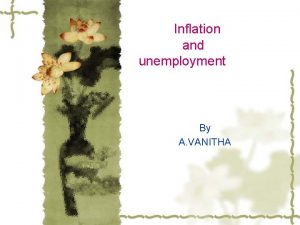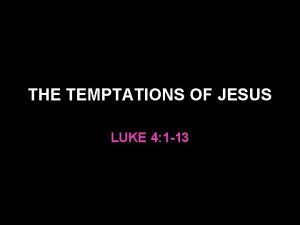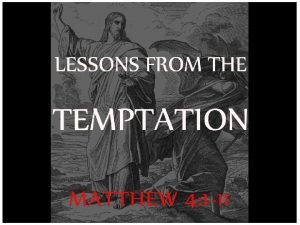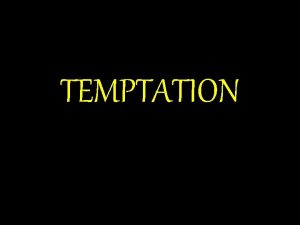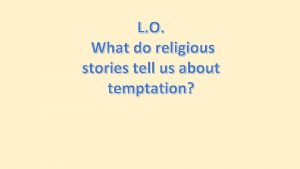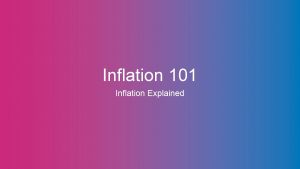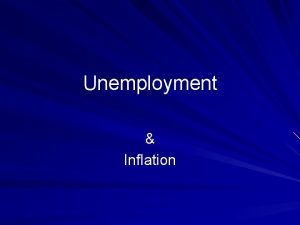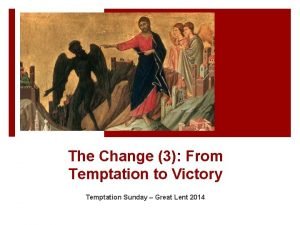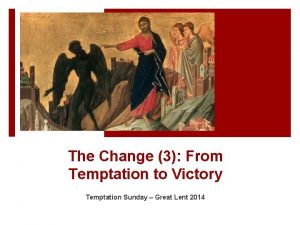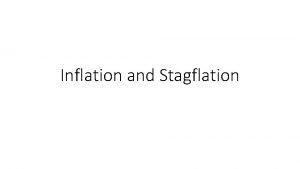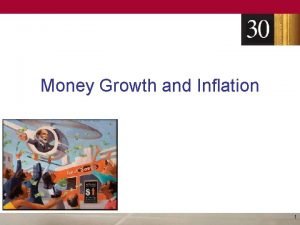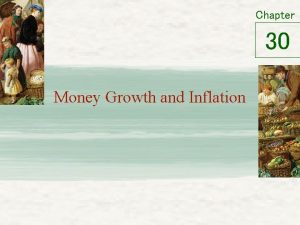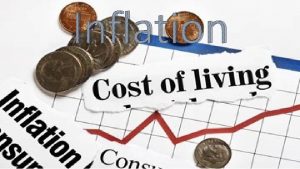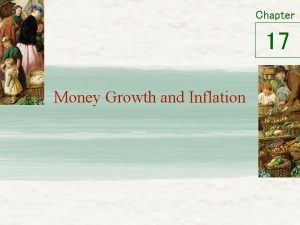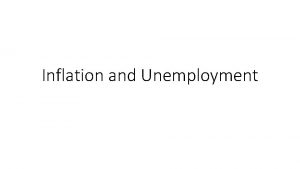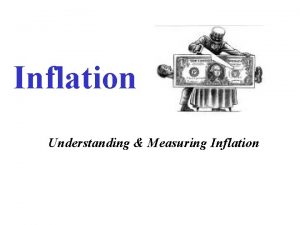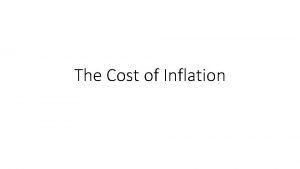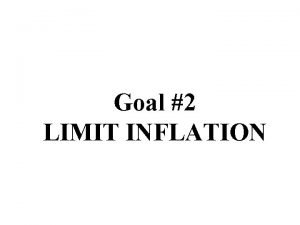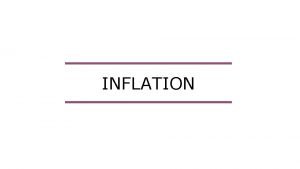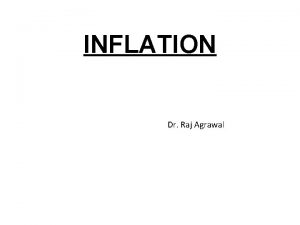Inflation and Recessions Inflation Temptation Inflation is caused

























- Slides: 25

Inflation and Recessions

Inflation Temptation • Inflation is caused primarily by governments’ printing more paper money or producing a large amount of cheap-metal coins, which vastly increases the supply of money and makes each piece of money less precious. • As sellers demand higher prices to make up for the fact that each piece of money is worth less, you get inflation.

Inflation Temptation • So why in the world would governments print too much money? • Historically, governments circulate more money in three circumstances: – When governments can’t raise enough tax revenue to pay their obligations. – When governments feel pressure from debtors who want inflation so they can repay their debts using less valuable money. – When governments want to try to stimulate the economy during a recession or depression.

Paying Bills by Printing Bills • Governments almost always have debts, and printing extra money can be a tempting way to pay them. – Quite often, a government may want to spend more money than it’s collecting in tax revenue. – One solution is to borrow the shortfall, but another is to simply print new bills to cover the difference.

Paying Bills by Printing Bills • The trouble with allowing a government to pay its debts and obligations by printing money is that as soon as the newly printed money begins to circulate, people spend it, drive up prices, and cause inflation. • And if the government keeps printing money, you end up with people offering shopkeepers and producers successively more case for the same amount of goods and services. – It’s like a giant auction where everybody bidding on items keeps getting more and more money to bid with

Paying Bills by Printing Bills • If a government gets into the habit of rapidly printing new money to pay its bills, inflation can soon reach or even surpass 20 or 30 percent per month, a situation referred to as hyperinflation. • Economists hate hyperinflation because it greatly disrupts daily life and ruins the investment climate.

Paying Bills by Printing Bills • Hyperinflation does the following: – Causes people to waste huge amounts of time trying to avoid the effects of rising prices. • Spend paycheck before prices change. – Destroys the incentive to save • Why save money when it won’t be worth anything tomorrow? – Harms business • People aren’t investing.

Feeling Printing Pressures • Even if the government isn’t trying to use inflation to increase tax revenues, a certain political constituency will always pressure it to circulate more money. • You may even be a member of this group – they’re called borrowers. – To understand the politics of inflation, understand that one of the functions of money is to act as a standard of deferred payment. – What does that mean?

Feeling Printing Pressures • Imagine that you borrow $1, 000 to invest on your farm, promising to pay the bank back $1, 200 next year. • For the past several years, prices in the economy have been stable, and, in particular, the pigs that you raise have sold for $100 each • Essentially, your loan lets you borrow the equivalent of 10 pigs with the promise to pay back 12 pigs next year.

Feeling Printing Pressures • But you’ve got an idea. – You lobby your congressman to lobby the government to print more money. – All that new money causes inflation, after which the price of pigs rise to $200 each. – Now you have to sell only six pigs to pay back the $1, 200 loan, leaving you with more pigs.

Feeling Printing Pressures • If the aforementioned scenario takes place, the bank is going to do everything in its power to fight the inflation. – If the inflation happens, the bank becomes the loser. – The loan was for $1, 000 or the equivalent of 10 pigs. – However, the bank is only going to get 6 pigs paid back to it. – The bank loses 40% of the loan’s value.

Stimulating the Economy with Inflation • A legitimate reason for governments to print more money has the very respectable name of monetary policy. • Monetary policy refers to the decisions a government makes about increasing or decreasing the money supply in order to stimulate or slow down the economy.

Stimulating the Economy with Inflation • The basic idea of monetary policy is that if the economy is in a recession, the government may print up some new money and spend it. – All the goods and services it buys with the new money stimulate the economy immediately. – In addition, all those businesses that received money from the government can now go out and spend that money themselves. – This can go on and on so long as no one starts to save the money that they got until it actually lifts an economy out of a recession.

Stimulating the Economy with Inflation • The sad upshot is that an increase in the money supply stimulates the economy only when it’s a surprise (remember, increasing the money supply increases prices). • If the government can print the money and start spending it before people can raise prices, you get an increase in the amount of goods and services sold. – Eventually, of course, people figure it out and raise prices, but until they do, the monetary stimulus works.

Tallying up the Effects of Inflation • In the United States, prices rise only a small amount each year. • However, even moderate inflation causes problems by cutting into the practical benefits of using money instead of barter. • You can get a better sense of this fact by looking at the four functions that economists generally ascribe to money and the ways in which inflation screws up each of them.

Tallying up the Effects of Inflation • They are: – Money is a store of value – Money is a unit of account – Money is a standard of deferred payment – Money is a medium of exchange

Why Recessions Happen

Why Recessions Happen • Macroeconomics' biggest ask is to try to prevent – or at least shorten – recessions, those periods of time during which the economy’s output of goods and services declines. • Economists, politicians, and most other people who work for a living despise recessions because of the toll they exact in human suffering. – That’s because when output falls, firms need fewer workers. They typical result is massive layoffs, which cause significant increases in unemployment. – In countries such as the United States, millions of workers lose their jobs, as well as their ability to support themselves and their families.

Why Recessions Happen • Typically, recessions begin with what economists like to call shocks – unexpected bad events such as terrorist attacks, natural disasters, the introduction of bad government policies, or sudden spikes in the cost of important natural resources such as oil.

The Business Cycle • Economies go through alternating periods during which the total output of goods and services expands and then contracts. • The alternating pattern of economic expansion and contraction, illustrated on the next slide, is often called the business cycle because businesses are so greatly affected by the changes in output.

The Business Cycle

The Business Cycle • The solid line on the previous graph represents how the economy’s total output of goods and services varies over time. • It alternates between troughs and peaks, which helps you identify periods of recession and recovery.

The Business Cycle • Recessions, or contractions, are the periods of time during which output falls – that is, after a peak and before the next through. • Recoveries, or expansions, are the periods of time during which output increases – that is, after a trough and before the next peak.

The Business Cycle • The dotted line represents the long-run, average growth trend for an economy’s total output of goods and services. • This particular chart shows sustained economic growth. – In other words, on average, total output tends to rise year after year.

The Business Cycle • Looking at the graph, you can see that macroeconomic policy has two very natural goals: – Make the long-run average growth line as steep as possible. • The steeper it is, the faster (on average) total output and living standards rise. – Reduce the size of business cycle fluctuations around the long-run average growth line. • Smaller distances between peaks and troughs translate into fewer people suffering through bouts of unemployment when output falls.
 What creates inflation
What creates inflation Types of unemployment
Types of unemployment What is temptation?
What is temptation? No temptation common to man
No temptation common to man No temptation has seized you
No temptation has seized you The new temptation on the mount
The new temptation on the mount Temptation of jesus luke
Temptation of jesus luke 18 temptation
18 temptation The temptations
The temptations Blessed are those who endure temptation
Blessed are those who endure temptation What is the abyss or temptation
What is the abyss or temptation Blessed is the man who endures temptation meaning
Blessed is the man who endures temptation meaning Othello falling action
Othello falling action My son if thou come to serve the lord
My son if thou come to serve the lord Translation
Translation Resisting temptation lds
Resisting temptation lds What would you do
What would you do Temptation revelation
Temptation revelation Who is reg mombassa
Who is reg mombassa What are tides and how are they caused
What are tides and how are they caused What causes the phases of the moon
What causes the phases of the moon Brian showed ingenuity in this chapter
Brian showed ingenuity in this chapter Sea and land breezes are caused because ____.
Sea and land breezes are caused because ____. Section 19-3 diseases caused by bacteria and viruses
Section 19-3 diseases caused by bacteria and viruses Cause of the french and indian war
Cause of the french and indian war Hair that forms in a circular pattern as on the crown
Hair that forms in a circular pattern as on the crown

